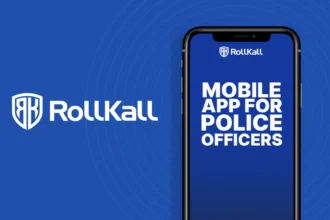Debt is a burden millions of people carry, especially in uncertain economic times. In 2024, rising living costs and unexpected expenses have left many individuals struggling to make ends meet. Bankruptcy may seem like the only option when overwhelmed by financial obligations, but it comes with long-lasting consequences that can affect your credit score and future borrowing capabilities. Fortunately, there are proven strategies to get out of debt without filing for bankruptcy.
In this guide, we’ll walk you through actionable steps to regain control of your finances, eliminate debt, and improve your financial health.
Assessing Your Financial Situation
Before diving into any debt repayment strategies, it’s crucial to have a clear understanding of your current financial standing. This step will help you see the big picture and pinpoint areas that need immediate attention.
Tracking Income and Expenses
Start by listing all sources of income and comparing them against your monthly expenses. Tools like budgeting apps or simple spreadsheets can help you see exactly where your money is going each month. Make sure to include all expenses, even the small ones that can add up over time.
Creating a Realistic Budget
Your budget is the cornerstone of a successful debt repayment strategy. A well-structured budget helps prioritize necessary spending while minimizing non-essential expenses. Start by setting aside funds for fixed expenses like rent, utilities, and groceries, and allocate a portion toward debt repayment.
Understanding Your Total Debt
Many people aren’t fully aware of how much they owe across credit cards, loans, and other debts. Write down each debt, the total amount owed, interest rates, and minimum payments. This will provide a roadmap for developing your repayment plan.
Creating a Debt Repayment Plan
Once you have a clear overview of your finances, the next step is to create a structured repayment plan. Two popular methods stand out: the debt snowball and debt avalanche strategies.
Debt Snowball Method
This method involves paying off the smallest debts first, while making minimum payments on the larger ones. As you clear the smaller debts, you gain momentum and a psychological boost, motivating you to tackle bigger debts next. This strategy is great for those who benefit from seeing quick wins.
Debt Avalanche Method
In this approach, you focus on paying off debts with the highest interest rates first. This method can save you money in the long run, as it reduces the amount of interest paid over time. While it might take longer to see progress, it’s highly effective in reducing overall debt faster.
Choosing the Right Method
The choice between the snowball and avalanche methods depends on your personal preferences and financial situation. If you need quick motivation, the snowball method may be best. However, if you’re focused on minimizing long-term costs, the avalanche method will serve you better.
Negotiating with Creditors
Many people aren’t aware that they can negotiate with creditors to improve their debt terms. Being proactive in reaching out to creditors can help you secure better payment conditions.
Tips for Contacting Creditors
Approach your creditors with a plan. Explain your financial situation and ask for specific help, such as a lower interest rate, reduced monthly payments, or a temporary pause in payments. Creditors are often willing to work with you, especially if it means avoiding default.
Requesting Lower Interest Rates
Interest rates can be a significant burden when trying to pay off debt. If you have a history of making on-time payments, you may have the leverage to negotiate lower interest rates with your credit card companies.
Settling for a Lower Payoff Amount
In some cases, creditors may be open to settling the debt for less than the full amount owed. Be cautious with this option, as settling can impact your credit score. It’s usually more effective when dealing with collection agencies or when your debt is already in default.
Consolidating Debt
Debt consolidation can be an excellent option for simplifying payments and reducing interest rates, especially if you have multiple high-interest debts.
How Debt Consolidation Works
Debt consolidation involves combining multiple debts into a single loan, often with a lower interest rate. This way, you only have one monthly payment to manage instead of several, which can reduce stress and streamline your finances.
Benefits and Drawbacks of Debt Consolidation
The primary benefit of debt consolidation is the potential to save money on interest and reduce the complexity of managing multiple payments. However, it’s important to note that consolidation doesn’t eliminate your debt—it simply restructures it. In some cases, if you don’t address the underlying spending habits, you may risk falling deeper into debt.
When to Consider Debt Consolidation
Consider consolidation if you have high-interest credit card debt, personal loans, or medical bills, and you’re struggling to keep up with payments. It’s also a good option if you qualify for a loan with better terms than your current debt agreements.
You can explore more debt management options and counseling services on My Finance Guider.
Increasing Your Income
Reducing debt doesn’t always have to be about cutting expenses—you can also focus on increasing your income. The extra cash can help accelerate your debt payoff.
Side Jobs and Freelance Opportunities
There are numerous ways to earn additional income. Consider freelancing, gig economy jobs, or part-time work. Popular platforms like Upwork, Fiverr, and TaskRabbit offer a range of freelance jobs from writing to handyman services.
Selling Unused Items for Extra Cash
You’d be surprised how much you can earn by decluttering your home. Selling unused electronics, furniture, or clothing on platforms like eBay, Craigslist, or Facebook Marketplace can provide a financial boost.
Upskilling to Boost Earning Potential
Invest in learning new skills that are in high demand. Taking a course or obtaining a certification in areas such as coding, digital marketing, or project





